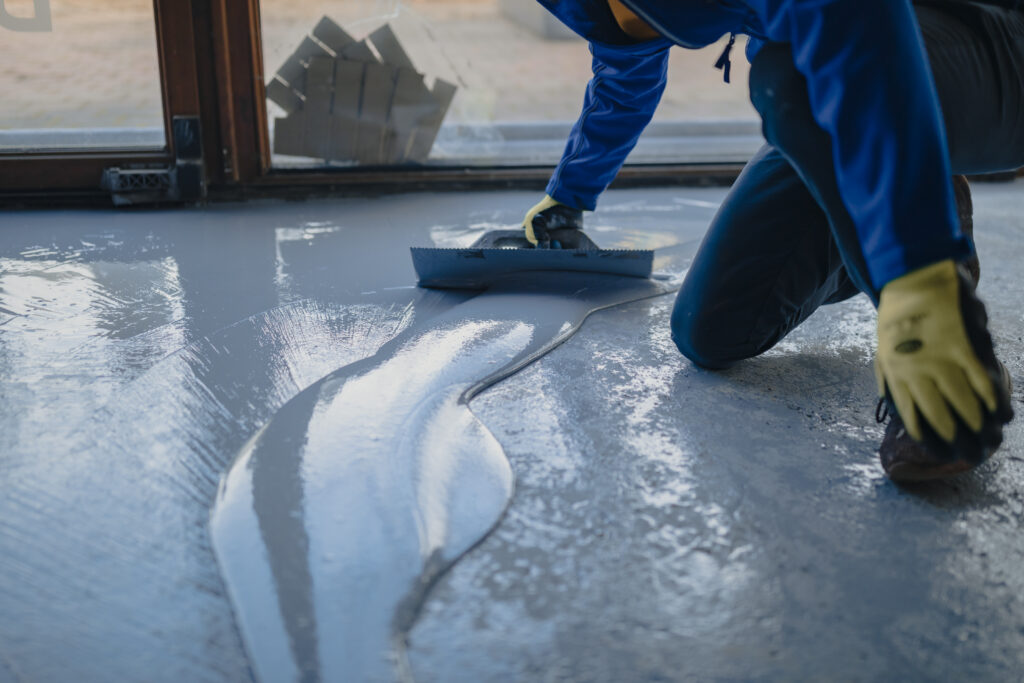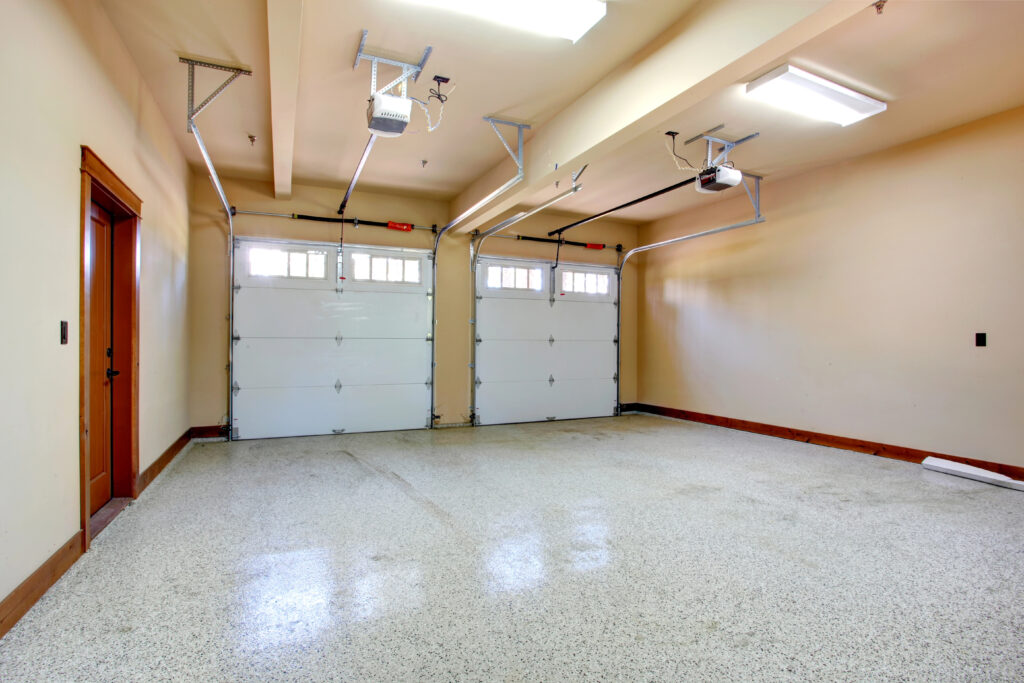
Your garage takes on a lot throughout the year. From scorching summer heat to heavy rain, weather changes can wreak havoc on the structure and flooring. Proper weatherproofing protects your garage from moisture, mold growth, temperature fluctuations, cracking concrete, and everyday wear, helping you avoid costly repairs and extending the life of your space. Here are some tips to help you get started.
1. Seal Cracks and Gaps
Even the smallest gaps around your garage doors, windows, and walls can create the perfect entry point for water, pests, and drafts. Use a high-quality weatherproof caulk to seal cracks, and add weatherstripping around doors and windows to keep out moisture and cold air.
Polyurethane caulk works best for concrete cracks, and silicone caulk works best around windows and trim.
2. Insulate the Garage Door
Your garage door is the biggest opening to your home. Insulating it helps regulate temperature, prevent condensation, and keep out cold drafts. Insulated panels or garage door insulation kits provide an affordable and effective solution.
However, if your door is old or worn, you may want to consider replacing it with an insulated model; this is particularly worth the investment if you have an attached garage, as it will provide comfort and energy savings.
3. Apply a Floor Sealant or Epoxy
Concrete floors are porous, allowing water, salt, and chemicals to seep in and cause cracks. Applying a concrete sealant or investing in an epoxy coating allows you to create a protective barrier against moisture and stains, keeping your floor strong and easy to clean.
Additionally, if you live in a cold climate, an epoxy floor coating will help protect your garage floor from road salt in the winter.

4. Install Proper Drainage
If your garage tends to collect water, make sure the ground around it has a proper slope. Consider adding a trench drain or floor drain to remove excess moisture. Proper drainage ensures rainwater and spills don’t pool on the ground and damage the concrete over time.
In addition, make sure there’s proper ventilation in your garage to help reduce moisture buildup. A dry garage isn’t only clean — it’s safe, protecting you and your family from slips and falls.
5. Add Garage Insulation
Insulating the walls and ceiling of your garage not only helps with energy efficiency but also prevents condensation buildup that could damage both its structure and your stored belongings. Fiberglass batts, spray foam, or rigid foam boards can all properly insulate and protect your garage.
6. Upgrade to a Weather-Resistant Garage Door Threshold
A threshold seal along the bottom of your garage door helps block rain, snow, dust, and pests by creating a tighter seal than weatherstripping alone. It also prevents water from seeping inside during heavy rainstorms.
7. Maintain Your Gutters and Downspouts
Water runoff from clogged gutters can seep into your garage and damage both the floor and the foundation. Keep gutters clear of debris and make sure downspouts direct water away from your garage.
8. Consider a Dehumidifier
Humidity is the biggest enemy of your garage. It can create a breeding ground for mold and mildew, as well as cause tools and vehicles to rust. Running a dehumidifier helps control moisture levels, especially in damp or rainy climates. Aim for less than 50% humidity in your garage.
Other Weatherproofing Considerations
Cleanliness — Keep the garage clean and dry to prevent mold and mildew. Clean up spills promptly, keep things organized, and consider shelving and cabinetry to keep items off the floor.
Check for Leaks — Inspect your roof and garage pipes for leaks and address them promptly. In addition, if you keep your water heater in the garage, ensure it isn’t leaking and is working correctly.
Seal Outlets and Switches — Even tiny openings around electrical outlets and switches can let in air. Seal them to prevent the majority of drafts and air leakage from coming into your garage.

Regular Inspections — Conduct regular inspections of your garage to ensure it stays in good condition, especially if you have just experienced heavy rain. Shifting soil or seasonal expansion/contraction can create new gaps over time. Look for drafty areas or gaps that need weatherproofing again.
Protect Your Garage with Weatherproofing
Weatherproofing your garage and garage floor doesn’t just protect your car — it helps preserve the structure, keep energy costs down, and ensure it remains a safe, usable space all year long. By stealing, insulating, and maintaining both the floor and the building itself, you can keep your garage in top shape no matter the weather.
